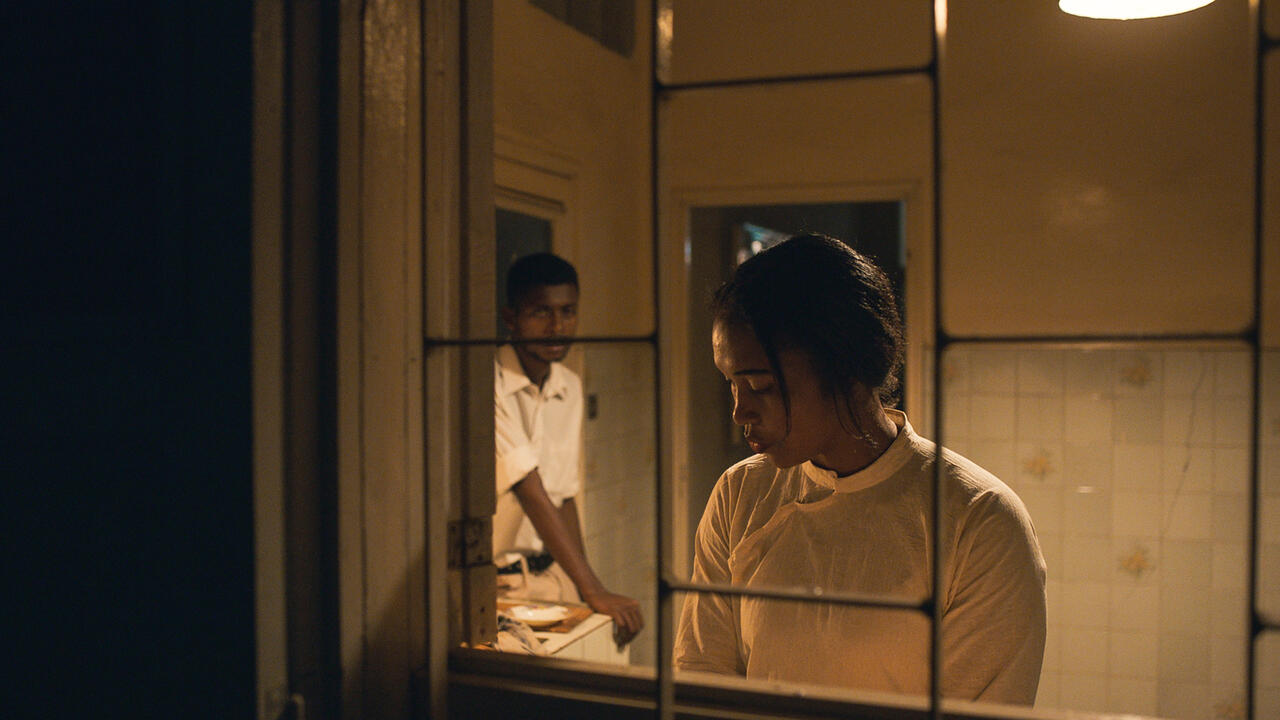The Morality Reflex
Contemporary Art Centre, Vilnius, Lithuania
Contemporary Art Centre, Vilnius, Lithuania

An early 16th-century etching by Theodoor Galle, illustrating the first Jesuit emblem-book Verdicus Christianus (A True Christian), depicts a thatched house in the shape of a human head, with windows and doors for orifices. A skeleton attempts to creep inside through a gaping eye socket, while a peasant, embodying prudent behaviour, hastens to slam the adjacent window shut. The caption promises eternal damnation to those with indiscreet or prying gazes.
The print makes a fitting emblem for ‘The Morality Reflex’ at the Contemporary Art Centre (CAC) in Vilnius. Curated by Heidi Ballet, the show brings together pieces by 15 artists and one collective, many working in video and film. Rather than the act of looking itself, however, what is being problematized here is the negotiation of the socially permissible, as well as the position of those today who – wittingly or not – assume the role of the vigilant peasant, defending the homestead from the intruder.
An array of vitrines at the entrance to the exhibition presented visitors with research material and historical objects offering a number of contexualizing frameworks for understanding social conflict: from the nation vs. the body through abject art and politics to the relation between patriarchy, witchcraft and capitalism.
Within the dim-lit space of the CAC, Carlos Motta’s film Nefandus (2013) features two men who travel down the Don Diego river in the Sierra Nevada de Santa Marta in the Columbian Caribbean. On their journey, they narrate stories of the pecados nefandos, unspeakable sins relating to acts of sodomy that took place in the Americas during the period of colonization. The slow-paced, oneiric video focuses on how the conquistadors weaponized sex and sexuality against the indigenous peoples and touches upon one of the exhibition’s underlying themes: how hygiene, disgust and dirt came to operate as moral concepts. This is also one way of reading Marianna Simnett’s short film, Blood (2015), whose young protagonist, Isabel, moves between two realms. In one, she has two turbinate bones in her nose surgically removed; in the other, she explores the rugged, mountainous landscape of northern Albania accompanied by Lali, a woman in her 60s who, at an early age, chose to become a burrnesha – a sworn virgin who dresses, works and lives as a man. Here, too, the concepts of purity and impurity – today and historically – are a key aspect of the story. The same thread runs through For the Record (2013) – a set of posters by the New York collective and longstanding AIDS activists, fierce pussy, based on the variation of the phrase ‘If he/she/they were alive today …’ It recurs, too, in Karol Radziszewski’s Kisieland (2009–ongoing), in which the artist presents materials from the vast archive of Ryszard Kisiel, the founder and publisher of Poland’s first communist-era gay zine, Filo. These include photographs from the 1980s of events held in the homes of members of the gay community, which, from 1985–87, was the subject of a secret mass operation on the part of the police – codenamed Hyacinth – to register and monitor all Polish homosexuals.
The exhibition also makes iconic works feel at home, among them Dan Graham’s Rock My Religion (1983–84) and Judy Chicago’s The Dinner Party (1974–79), here represented in the video Judy Chicago’s The Dinner Party: A Tour of the Exhibition (2015), narrated by the artist herself. To varying degrees, each piece explores morality as a corporeal mode – a timely reflection at our current moment, when the twitching of social muscles across the globe feels precipitously close to breaking out into the spasms of war.
Main image: Karol Radziszewski, Kisieland (detail), 2009–ongoing, mixed-media installation























